When going into a new town, seek out the highest point from which to get the most sweeping overview. This will quite often guide your further exploration. In this case, I was back in Florence – Firenze – and planned to head back up to the top of the Duomo for my second time.
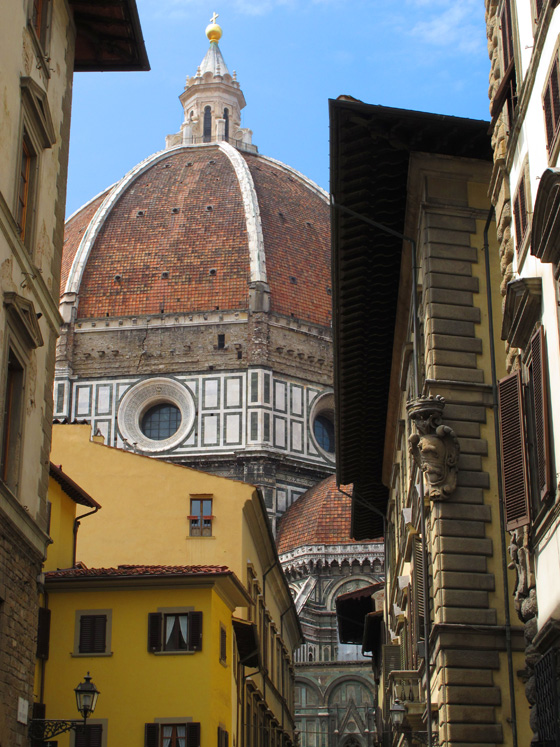
Walking from my hotel, along the Via dei Servi, the Duomo loomed large, dominating the neighborhood street scene. I was heading to the cupola walkway at the top of the double-brick-walled dome!
It was worth paying for the guided tour of the church and its high terraces. There was no waiting in line, and the group had access to places the average visitor cannot see.
For a detailed description, take a look at the Wikipedia entry about the Duomo of Firenze. Here’s an excerpt:
The Basilica di Santa Maria del Fiore (English: Basilica of Saint Mary of the Flower) is the main church of Florence, Italy. The Duomo, as it is ordinarily called, was begun in 1296 in the Gothic style to the design of Arnolfo di Cambio and completed structurally in 1436 with the dome engineered by Filippo Brunelleschi. The exterior of the basilica is faced with polychrome marble panels in various shades of green and pink bordered by white and has an elaborate 19th century Gothic Revival façade by Emilio De Fabris.
The cathedral complex, located in Piazza del Duomo, includes the Baptistery and Giotto’s Campanile. The three buildings are part of the UNESCO World Heritage Site covering the historic centre of Florence and are a major attraction to tourists visiting the region of Tuscany. The basilica is one of Italy’s largest churches, and until development of new structural materials in the modern era, the dome was the largest in the world. It remains the largest brick dome ever constructed.
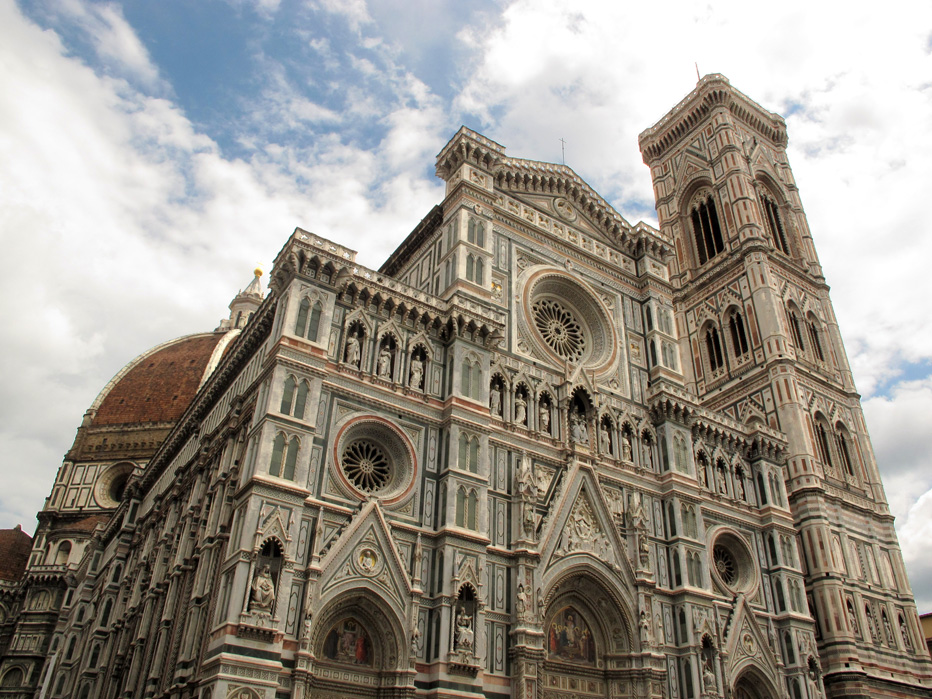
In this photo, you can see the dome in the background, behind the flat, front facade of the church. Giotto’s square campanile bell tower is adjacent to the south side (right) of the church.
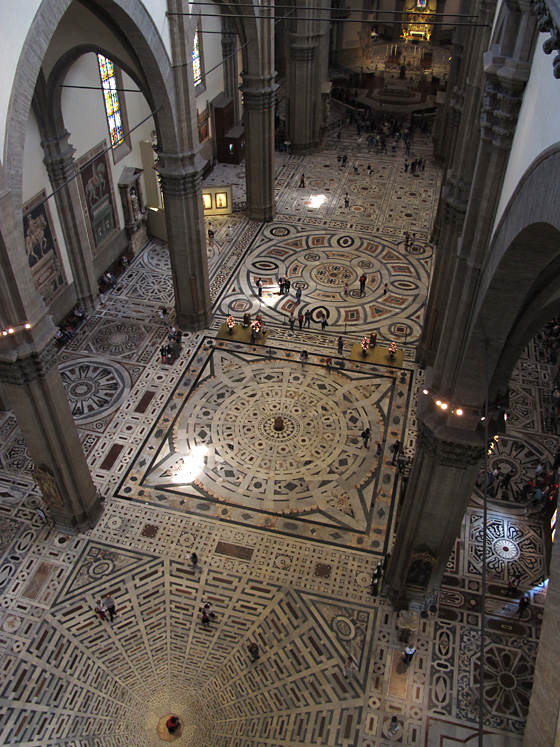
The interior floor of the church is a dramatic eye-full of pattern. Keep in mind that this is all stone, cut and inlaid! Look at the optical illusion of the pattern on the floor in the bottom of the picture!
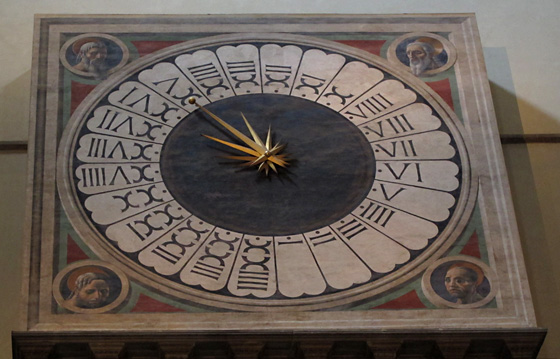
Above the main door is the colossal clock face with fresco portraits of four Prophets or Evangelists by Paolo Uccello (1443). This one-handed liturgical clock shows the 24 hours of the hora italica (Italian time), a period of time ending with sunset at 24 hours. This timetable was used until the 18th century. This is one of the few clocks from that time that still exist and are in working order. (Wikipedia)
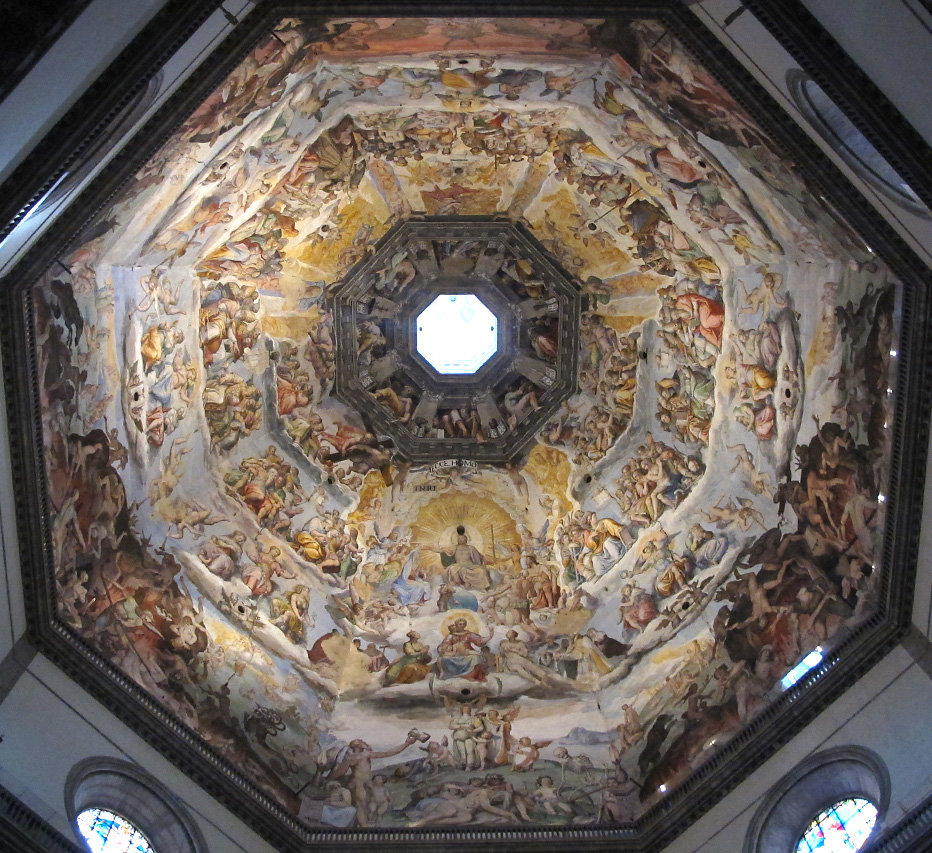
The fresco on the interior of the dome was started by Vasari and Zuccari in 1568, depicting The Last Judgement.
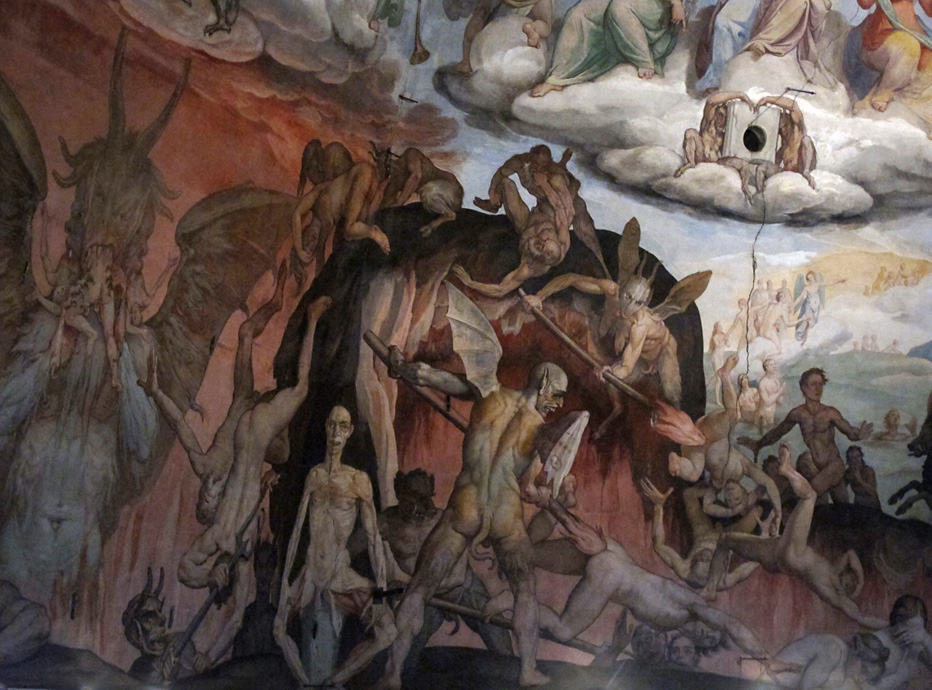
Portrayals of hell, dark and bloody red at the bottom of the fresco, are gruesome and macabre. Inspiration to follow the church and obediently tithe?
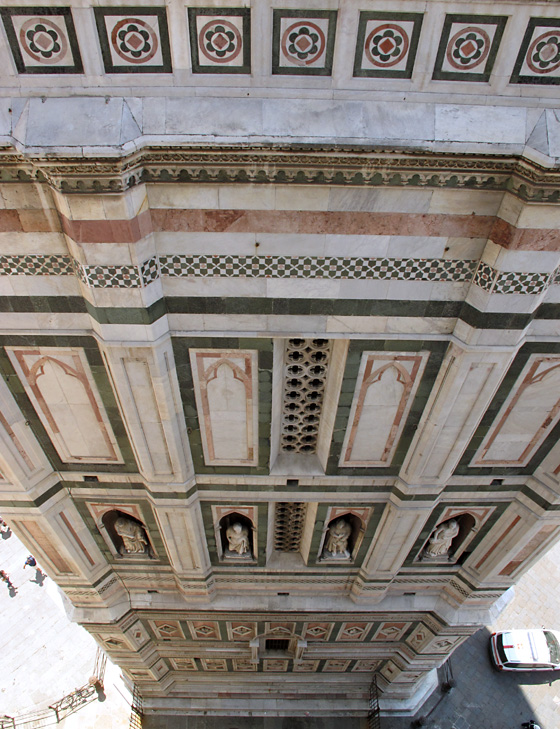
It seemed we were almost close enough to reach out and touch the Campanile as we looked down to the ground.
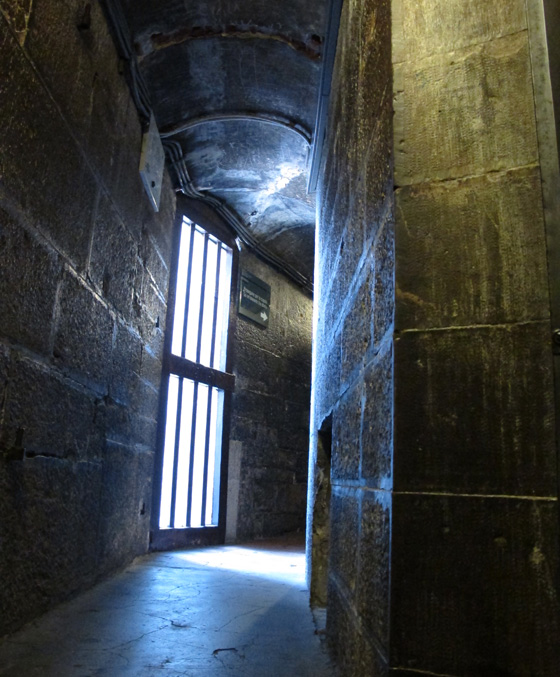
The dome is constructed of two walls of brick. There is a narrow, convoluted stairway/walkway that winds upwards between the two layers. Occasional, small windows allow light and peek-a-boo views.
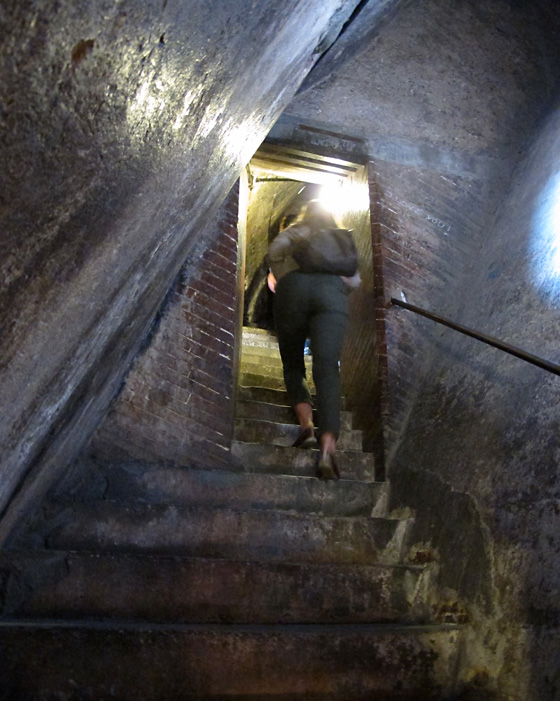
It got complicated when those ascending and those descending crossed paths and had to make way. One frequently had to tuck into a tiny blind spot to let the other pass.
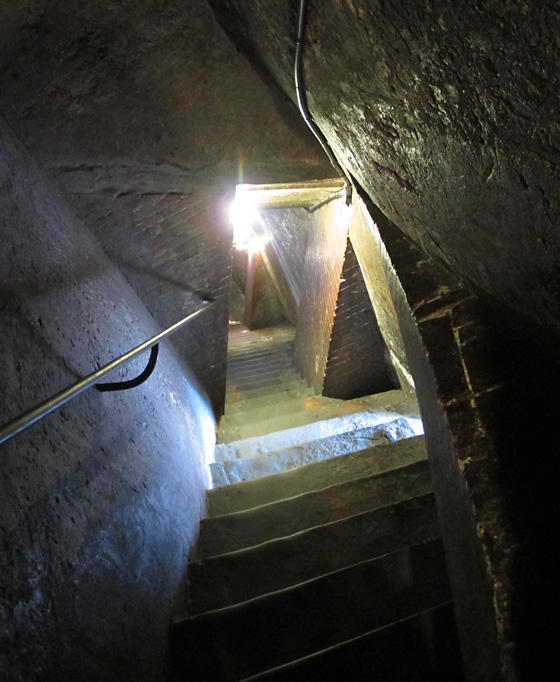
Here you can see a couple of the tiny “blind spots” a person tucks into to let another pass by when going in the opposite direction. Imagine designing this staircase!
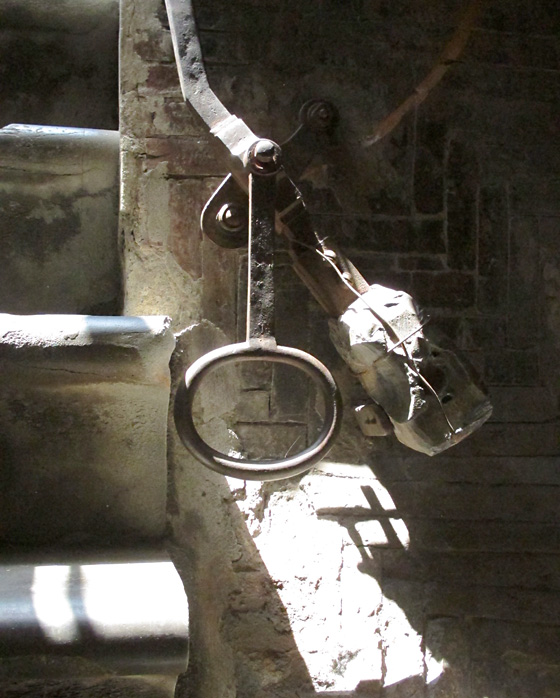
This is the rustic latch and pendulum on the trap door that opens up to the open air cupola walk way.
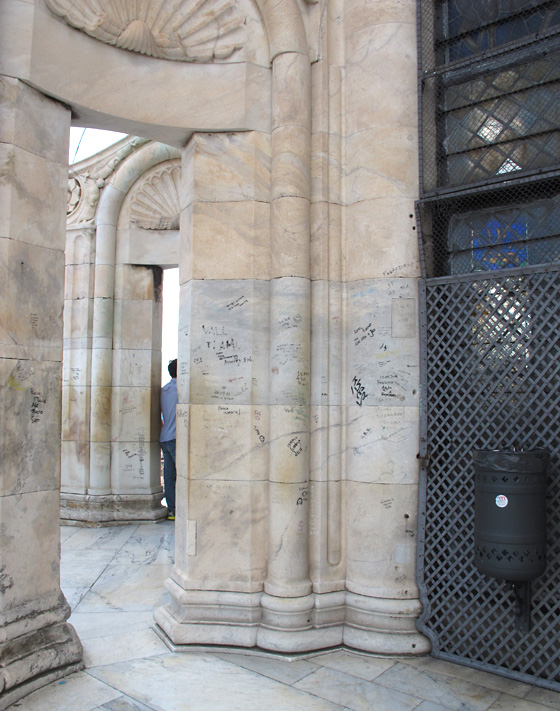
The cupola has doorways and columns forming viewpoint terraces. Can you believe that people would write graffiti all over this ancient marble?

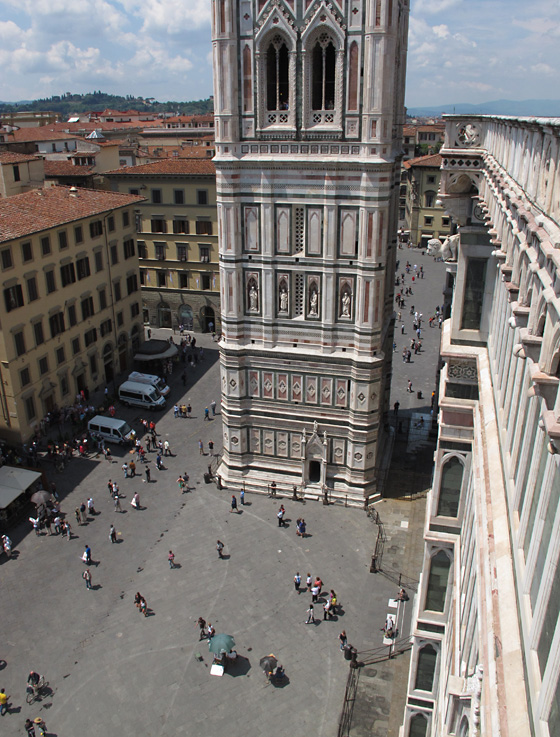
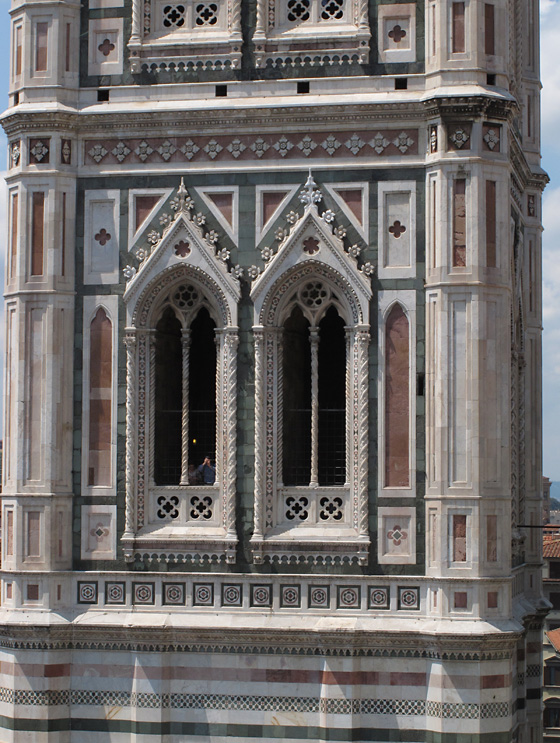
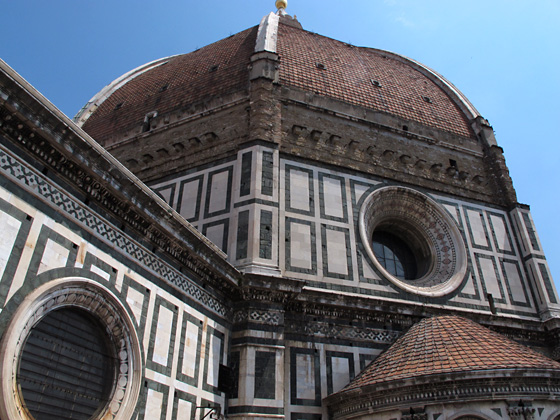
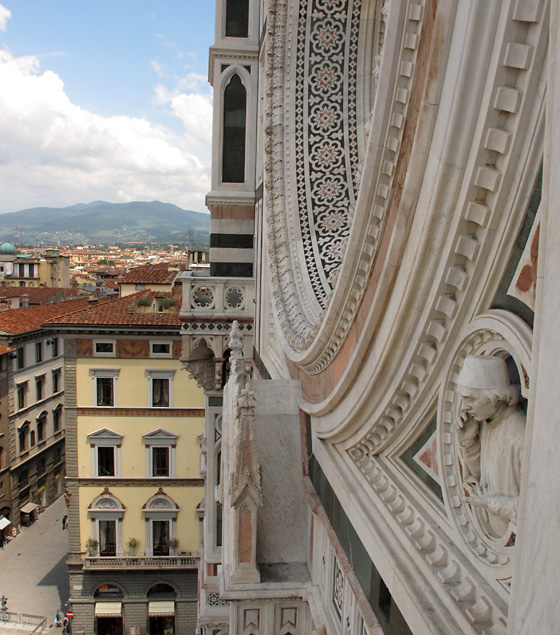
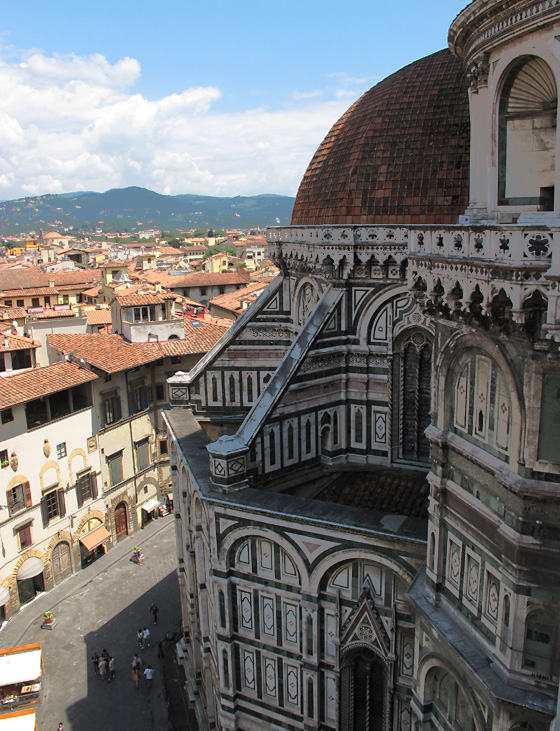
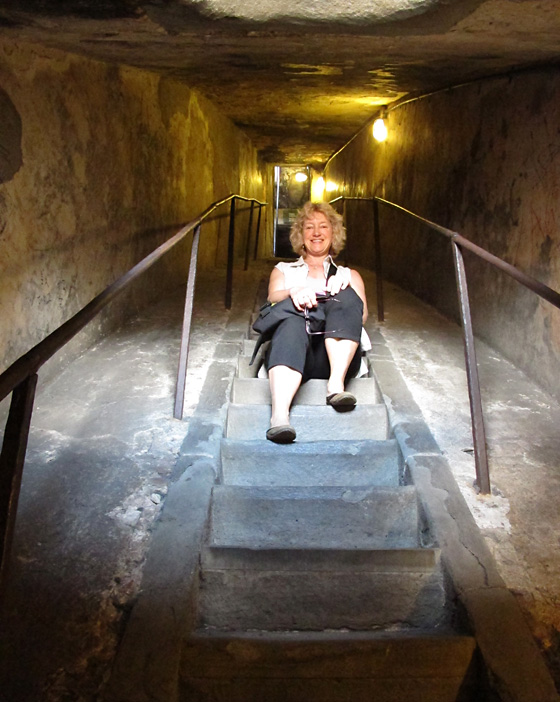
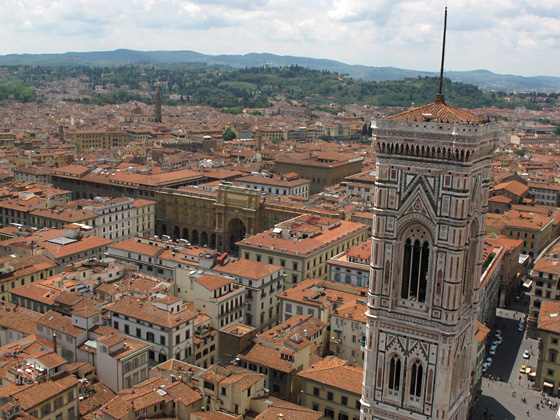
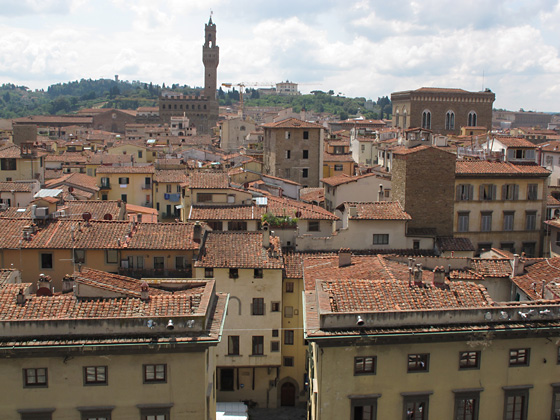
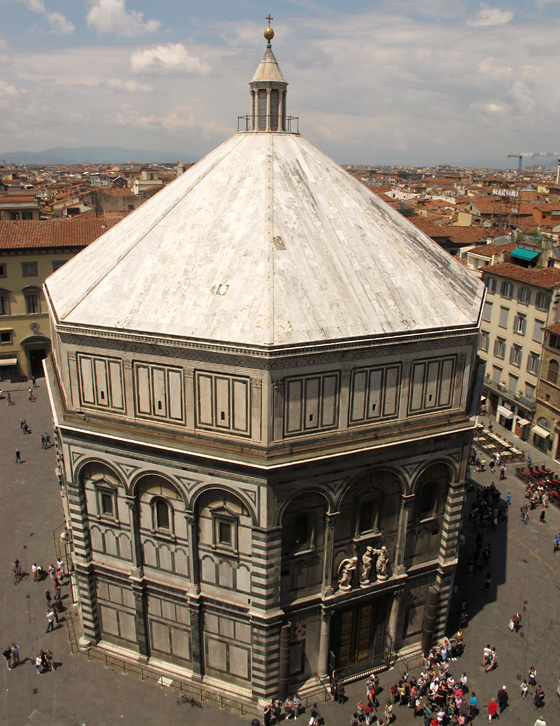
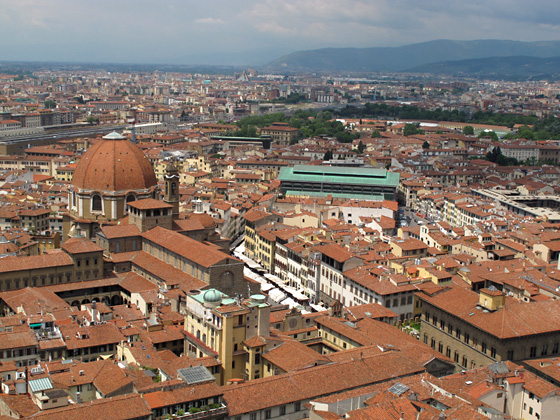
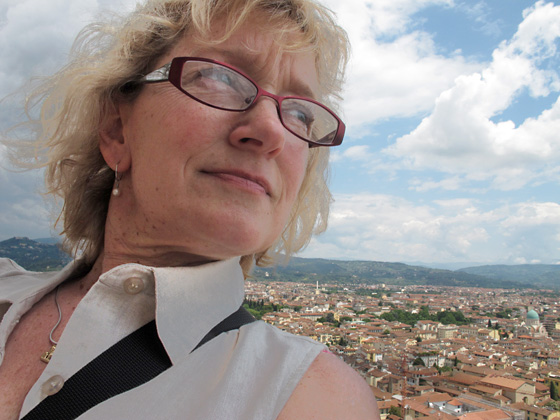
Beautiful photo series. Love the architectural details of the stonework. My favorite shot is the interior floor shot seen from above!
Thanks, Michael. I appreciate that coming from you. Since I was on a tour, I didn’t have the freedom of time and place like I would have on my own, but it also got me places I couldn’t have gone. Ahh, the trade-offs. And I’m just shooting my little Canon G12, which has its trade-offs, too.
your Canon G12 must be in shock but how well these wonderful angle shots speak for Canon and speak more loudly for the photographer who saw opportunity and took it. The floor shots of that incredible stonework and inlay are breath taking. Kudos, Maureen.
Incidentally, what are you doing wearing MY chi chi glasses frames in Florence?????
Helen